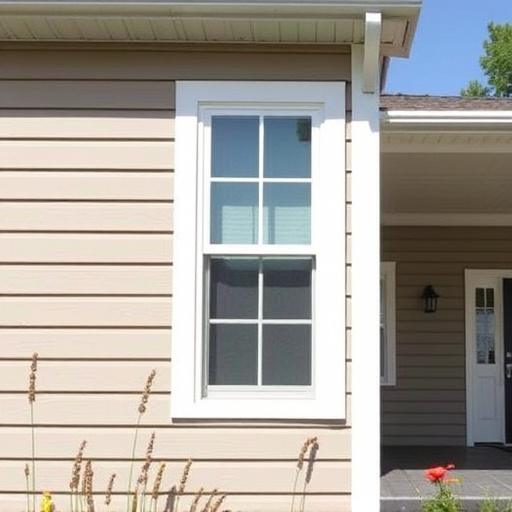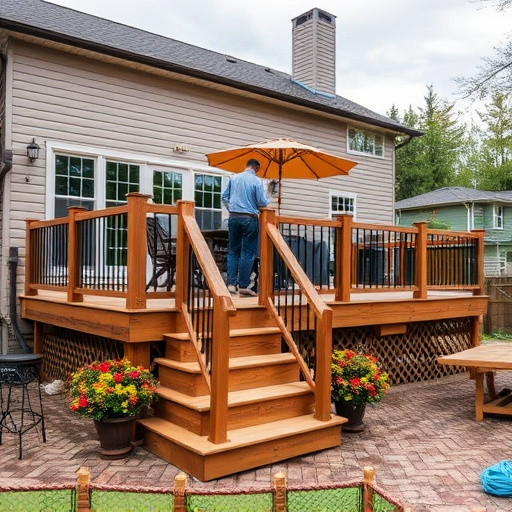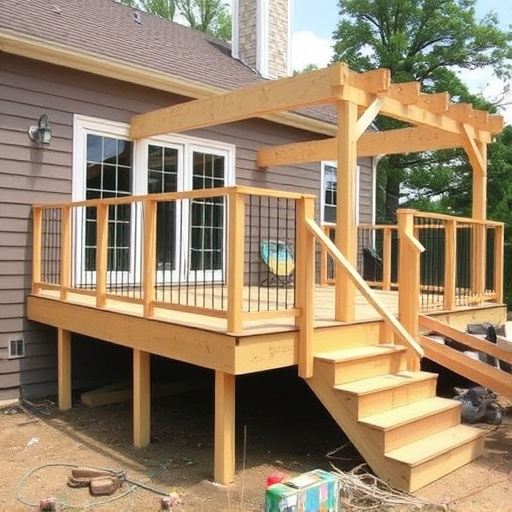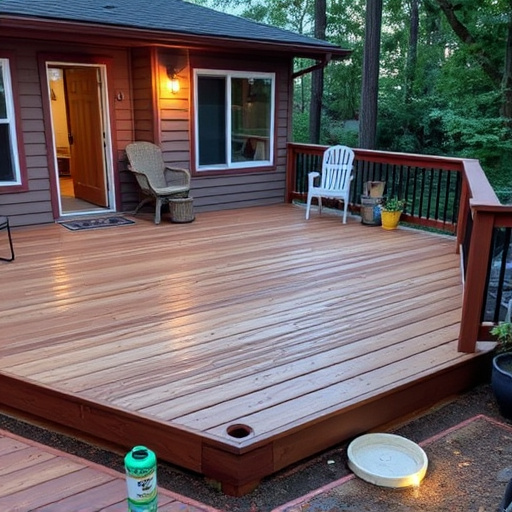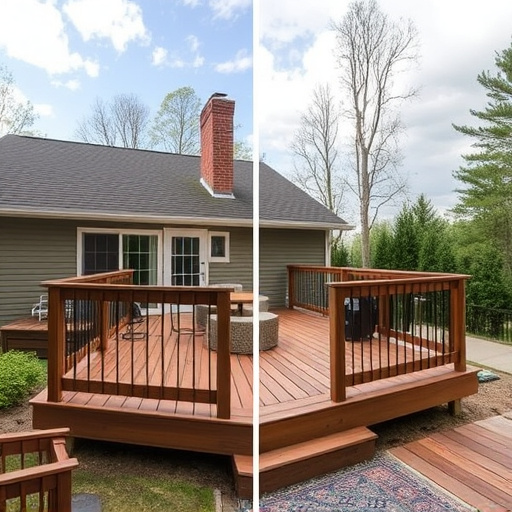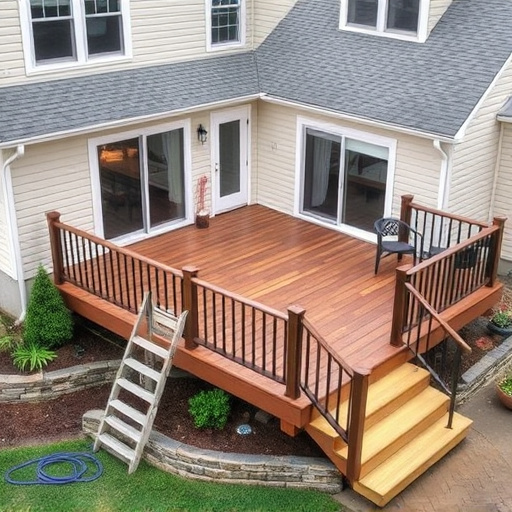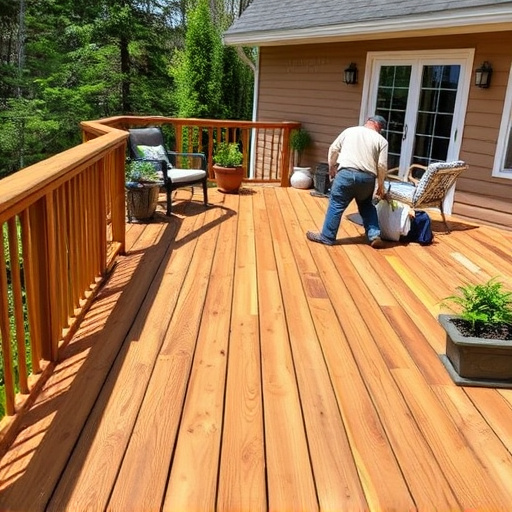Commercial decking design combines construction, landscaping, and architecture to create dynamic outdoor spaces. Key elements include durable material choices, fluid designs connecting interior and exterior, safety features, strategic integration of siding repairs and gutters, and landscaping harmony. Achieving architectural harmony through style, color, and texture alignment with surrounding structures is paramount, enhancing curb appeal and property value while providing functional, long-lasting outdoor living areas.
Commercial decking enhances outdoor spaces, seamlessly integrating with landscaping and architectural design. This article explores the art of creating harmonious environments that blend functionality with aesthetic appeal. From materials and design considerations to landscape integration and architectural harmony, we delve into strategies for optimizing your space. Discover how the right commercial decking choices can transform your outdoor areas into captivating, cohesive, and inviting destinations.
- Understanding Commercial Decking: Materials and Design Considerations
- Integrating Decking with Landscaping for Optimal Visual Appeal
- Architectural Harmony: Blending Decking with Building Designs
Understanding Commercial Decking: Materials and Design Considerations
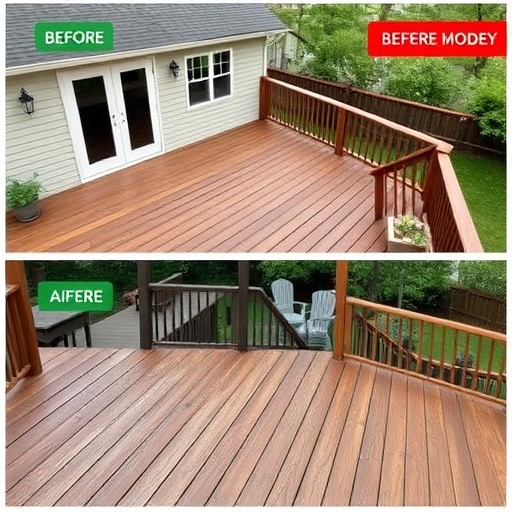
Commercial decking goes beyond mere outdoor structures; it seamlessly integrates with landscaping and architecture to create vibrant, functional spaces. When designing commercial decking, several key considerations come into play. Materials are a primary factor, offering options like wood, composite, or metal, each with unique advantages in terms of durability, maintenance, and aesthetics. For instance, treated wood is affordable and natural, while composite materials blend plastic and wood for low-maintenance benefits.
Design itself plays an equally crucial role in the success of commercial decking projects. Flowing lines and open layouts that connect interior and exterior spaces are popular trends. Accessibility is another vital aspect, ensuring easy navigation and comfortable functionality. Incorporating features like ramps, handrails, and non-slip surfaces not only enhances safety but also caters to diverse user needs. In addition, integrating siding repairs and siding and gutters into the decking design can contribute to the overall aesthetic and structural integrity of exterior home improvements.
Integrating Decking with Landscaping for Optimal Visual Appeal
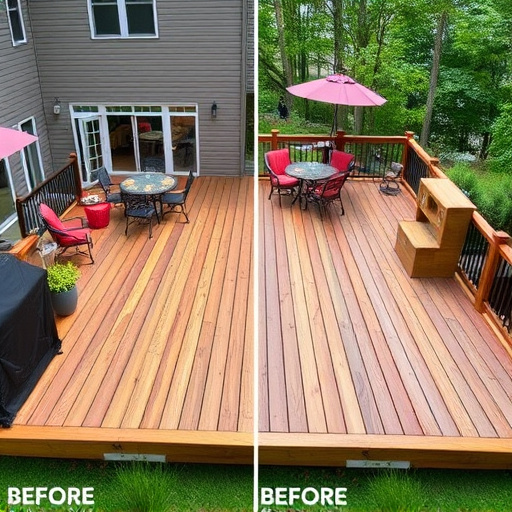
When it comes to enhancing outdoor spaces, integrating commercial decking with landscaping is a powerful strategy to achieve optimal visual appeal. Decks serve as versatile platforms that seamlessly blend with surrounding natural elements, creating a harmonious atmosphere. By carefully considering the design and layout of the deck, professionals can ensure it complements the existing landscape, from lush greenery to body of water. Incorporating softscaping around the deck—such as strategically placed flowers, shrubs, or trees—not only adds color and texture but also creates a transition between hardscape and softscape elements, resulting in a visually pleasing and cohesive space.
Moreover, aligning the decking design with architectural features of nearby structures further reinforces the overall aesthetic. For instance, matching decking materials and colors to the building’s siding (whether it’s commercial siding repairs or replacement) establishes a unified look throughout the property. This intentional integration ensures that the deck not only functions as an outdoor living area but also enhances the overall curb appeal and value of the commercial property, providing a space that both customers and employees will enjoy and appreciate.
Architectural Harmony: Blending Decking with Building Designs
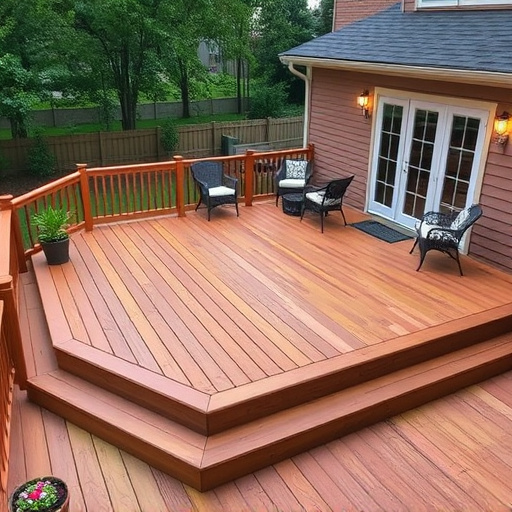
In the realm of commercial decking, achieving architectural harmony is a key consideration that sets apart exceptional designs from mere functional spaces. Integrating decking seamlessly with building designs requires an understanding of both structural needs and aesthetic goals. By aligning the decking’s style, color, and texture with the surrounding architecture, including roofing services or even commercial siding options, professionals can create a cohesive outdoor environment. This harmonious blend not only enhances the overall beauty of the property but also reinforces a sense of continuity between indoor and outdoor spaces.
Landscape architects and designers play a pivotal role in this process, serving as the bridge between structural elements like decking and the broader architectural narrative. They ensure that the chosen materials, from wood to composite decks, complement existing structures, whether it’s modern, traditional, or industrial. This careful consideration extends beyond visual appeal; it also encompasses functionality and durability, ensuring that the decking not only looks stunning but also stands the test of time, much like the building’s roofing services or siding.
Commercial decking, when designed and integrated thoughtfully, becomes an extension of both landscaping and architecture. By understanding the materials, design considerations, and harmonious blending with building designs, professionals can create outdoor spaces that are not only functional but also visually stunning. Integrating decking with surrounding landscapes enhances the overall aesthetic appeal, while aligning it with architectural styles ensures a seamless and elegant transition from indoors to out. This approach transforms commercial spaces into inviting environments that captivate users and leave a lasting impression.






